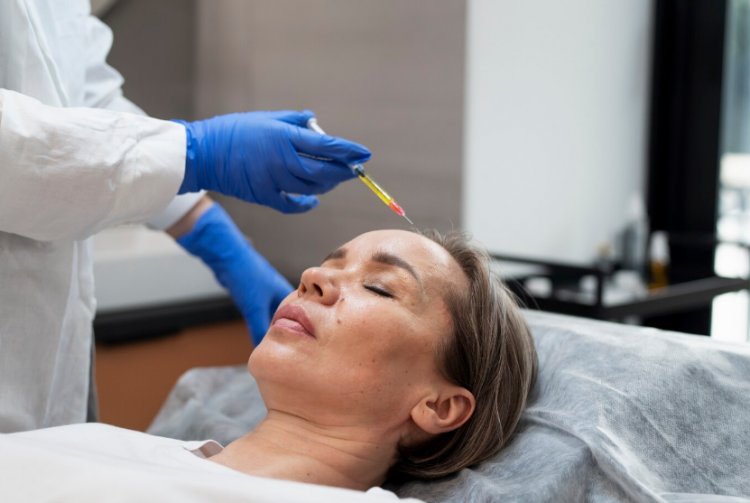Platelet Rich Plasma (PRP) Therapy: A Comprehensive Exploration of its Applications and Mechanisms
Platelet Rich Plasma (PRP) therapy is a cutting-edge medical procedure that has gained significant attention for its diverse applications in therapeutic and cosmetic fields. By utilizing concentrated platelets from the patient's own blood, PRP therapy harnesses the body's natural healing mechanisms. This comprehensive exploration delves into the intricacies of PRP therapy, covering its process, applications across medical specialties such as orthopedics, dermatology, dentistry, and chronic wound management, as well as its underlying mechanisms of action involving cell proliferation, angiogenesis, inflammation modulation, and matrix remodeling. The conclusion emphasizes PRP therapy's potential in revolutionizing treatment paradigms and offering safe, effective, and minimally invasive therapeutic options. Additionally, centers in both the United Kingdom and Turkey are highlighted, showcasing their expertise in administering PRP therapy across various disciplines. #PRPtherapy #Platelet

Platelet Rich Plasma (PRP) Therapy: A Comprehensive Exploration of its Applications and Mechanisms
Understanding PRP:
At its core, PRP is a derivative of whole blood enriched with a high concentration of platelets, which are integral components responsible for clotting and tissue repair. The process of obtaining PRP involves a series of steps:
Blood Collection:
A small volume of the patient's blood is drawn using standard venipuncture techniques, typically from the arm.
Centrifugation:
The collected blood is then subjected to centrifugation, a process that separates its components based on density. Through this centrifugation process, platelets are concentrated into a plasma solution, resulting in PRP.
Activation (Optional):
In certain applications, PRP may undergo activation using calcium chloride or thrombin, which stimulates the release of growth factors from platelets, enhancing its regenerative properties.
Applications of PRP Therapy:
PRP therapy finds widespread application across various medical specialties, each leveraging its unique regenerative potential:
Orthopedics and Sports Medicine:
PRP injections are commonly utilized to treat an array of musculoskeletal conditions, including tendon injuries (e.g., Achilles tendonitis, tennis elbow), ligament sprains, and osteoarthritis.
Dermatology and Aesthetics:
Within the realm of dermatology and aesthetic medicine, PRP has emerged as a versatile tool for addressing various skin concerns and promoting rejuvenation.
Dentistry:
In dentistry, PRP plays a pivotal role in enhancing the outcomes of surgical procedures such as dental implant placement, bone grafting, and periodontal surgery.
Chronic Wound Management:
PRP therapy holds promise in the management of chronic wounds, such as diabetic ulcers and pressure sores, where conventional treatment modalities have proven ineffective.
Mechanisms of Action:
The therapeutic efficacy of PRP stems from its rich milieu of growth factors, cytokines, and bioactive molecules, which orchestrate a cascade of regenerative processes:
Stimulation of Cell Proliferation:
Growth factors such as platelet-derived growth factor (PDGF), transforming growth factor-beta (TGF-β), and vascular endothelial growth factor (VEGF) promote the proliferation and migration of various cell types involved in tissue repair.
Enhancement of Angiogenesis:
PRP promotes the formation of new blood vessels (angiogenesis) by upregulating angiogenic factors such as VEGF and fibroblast growth factor (FGF).
Modulation of Inflammation:
PRP exerts anti-inflammatory effects by suppressing the production of pro-inflammatory cytokines and promoting the release of anti-inflammatory mediators.
Matrix Remodeling:
Through the secretion of matrix metalloproteinases (MMPs) and tissue inhibitors of metalloproteinases (TIMPs), PRP facilitates the remodeling of extracellular matrix (ECM), promoting tissue regeneration and remodeling.
Conclusion:
Platelet Rich Plasma (PRP) therapy stands at the forefront of regenerative medicine, offering a potent and versatile approach to tissue repair and rejuvenation across diverse medical specialties.
Centers in the United Kingdom:
- The Regenerative Clinic - London
- Harley Street Skin Clinic - London
- Manchester Institute of Health & Performance (MIHP) - Manchester
- Laser and Skin Clinics - Edinburgh
- The Private Clinic - Multiple Locations
Centers or Clinics in Turkey:
- Istanbul Aesthetic Center - Istanbul
- Acıbadem Healthcare Group - Istanbul
- Estetik International - Istanbul
- Medipol Mega University Hospital - Istanbul
- Kadıköy Florence Nightingale Hospital - Istanbul
Discover Coupoly's exclusive Medical Concierge Service, connecting you with renowned doctors and clinics, whether in the UK or abroad.
Get in Touch
Disclaimer:
The information provided in this article is for educational purposes only and should not be considered medical advice. If you have any health concerns or are experiencing symptoms, it is important to consult with a healthcare professional, such as a doctor or clinic, for proper diagnosis and treatment. Always seek the advice of your doctor or other qualified health provider with any questions you may have regarding a medical condition. Do not disregard professional medical advice or delay in seeking it because of something you have read in this article.
What's Your Reaction?





















